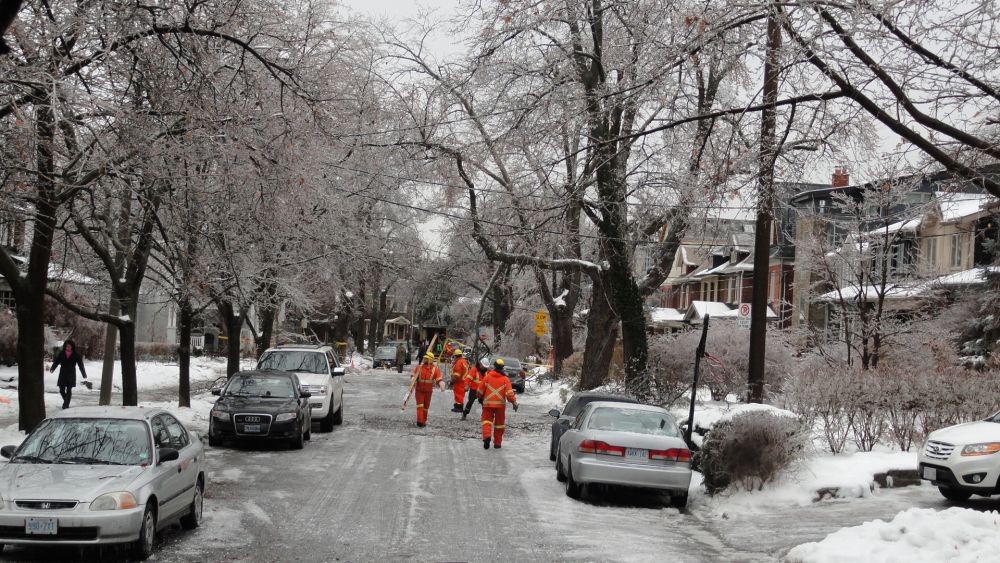A silver maple sapling was planted at Leslie Grove Park this year, grafted from the Alexander Muir tree that fell during a storm last July. Of several severe weather events in the past year-and-a-half, that storm was one that has greatly affected Toronto’s tree canopy.
Responsible for overseeing emergency response for our electrical distribution system, I’ve observed how falling tree limbs close to hydro lines have the ability to cause outages and damage Toronto Hydro’s infrastructure. As we saw throughout the ice storm, tree branches weighed down by ice fell on wires — leaving approximately 300,000 customers in the dark and blocking access for our crews as they worked to restore power.

Changing weather patterns are raising the risk of these weather events impacting the system. In 2013, we saw tree contacts cause approximately eight per cent of all power outages — even before severe weather events are taken into account.
An independent review we commissioned following the ice storm found that existing vegetation management practices and city forestry management guidelines are not designed to prevent the extent of the damage caused by an ice storm. It wasn’t a surprise when the review panel recommended we work with the City of Toronto to review forestry management practices and pruning specifications to find more ways to prevent future damage.
Simply cutting back all of Toronto’s trees would be the easy solution, but we would lose many of the benefits trees provide, including cleaner and cooler air. These are considerations we take into account as we try to find a balance between building the canopy and making sure we’re able to keep the lights on for our customers.
Our vegetation management team pruned approximately 50,000 trees in 2013. While we are committed to helping limit tree contact with power lines through preventative maintenance, we still need your help moving forward.
If you’re thinking of adding or making changes to the landscaping in your yard, make sure to:
Plant new trees and shrubs away from power lines and electrical equipment
The Backyard Tree Planting Program encourages homeowners to use a consultant from LEAF to find the ideal location for new plants and trees, away from power lines. They’ll also help to strategically place shrubs and trees to help reduce energy consumption in your home. Well-placed and cared-for trees can reduce home cooling costs by up to 40 per cent.

Have mature trees regularly checked and pruned by a certified arborist
Many older trees can be pruned to grow away from power lines. Providing regular check-ups can help ensure trees are ready to weather the next storm and can help you save on expensive cleanup costs.
Refer to LEAF’s tree and shrub profiles
LEAF offers a full list of species native to Toronto and the GTA.You can view profiles on their website to learn more about these trees and shrubs that are well-suited to our climatic conditions and provide essential habitat for wildlife.

Ben LaPianta is the Executive Vice-President and Chief Electric Operations and Procurement Officer at Toronto Hydro.
Toronto Hydro supports LEAF's Backyard Tree Planting Program and the annual Leslieville Tree Festival. Every Earth Day we work with Toronto Hydro staff to plant hundreds of trees at selected sites across Toronto.
